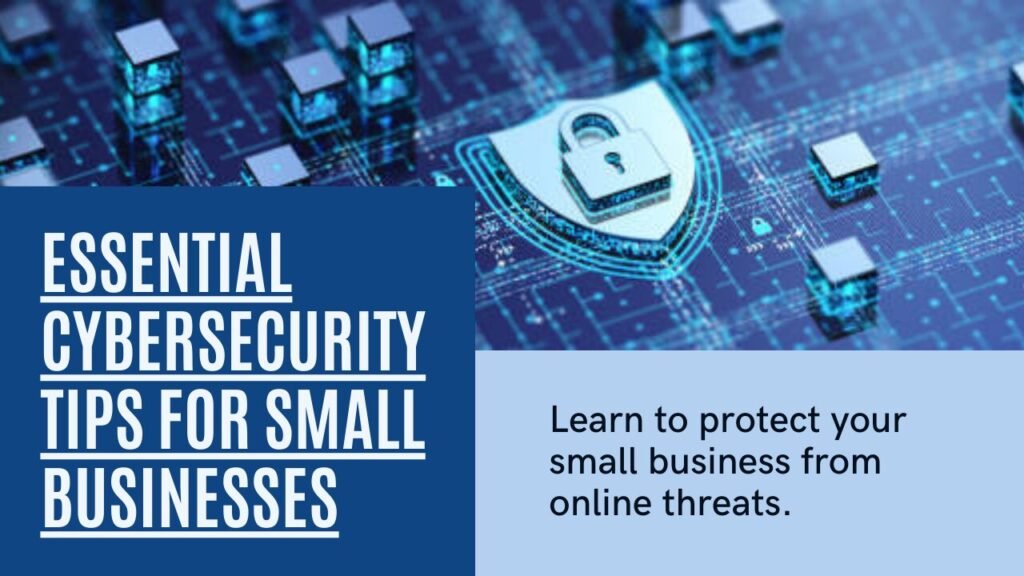In today’s digital age, cybersecurity is a critical concern for businesses of all sizes. Small businesses, in particular, are often seen as easy targets by cybercriminals due to their typically weaker security defenses. Implementing robust cybersecurity measures is essential to protect your company’s sensitive data, maintain customer trust, and ensure business continuity. Here are some essential cybersecurity best practices for small businesses.
1. Educate and Train Employees
Your employees are your first line of defense against cyber threats. Ensuring they are aware of common cybersecurity risks and know how to respond is crucial.
Key Actions:
- Conduct regular training sessions on phishing, social engineering, and safe browsing practices.
- Implement a clear cybersecurity policy outlining acceptable use of company devices and data.
- Encourage employees to report suspicious activities promptly.
2. Use Strong Passwords and Enable Multi-Factor Authentication (MFA)
Weak passwords are one of the easiest ways for cybercriminals to gain access to your systems. Enforcing strong password policies and adding an extra layer of security with MFA can significantly reduce this risk.
Key Actions:
- Require employees to use complex passwords that include a mix of letters, numbers, and symbols.
- Implement MFA for all accounts, requiring a second form of verification (e.g., a code sent to a phone) in addition to a password.
- Encourage the use of password managers to securely store and manage passwords.
3. Regularly Update Software and Systems
Outdated software and systems are vulnerable to exploitation. Regular updates and patches help protect against known vulnerabilities.
Key Actions:
- Enable automatic updates for all software, including operating systems, applications, and security tools.
- Regularly review and update all hardware and software to ensure they are supported and secure.
- Use reputable antivirus and anti-malware solutions and keep them up to date.
4. Implement Firewalls and Antivirus Protection
Firewalls and antivirus software are essential tools for defending against cyber threats. They help prevent unauthorized access and detect malicious activity.
Key Actions:
- Install and configure firewalls on all network devices to monitor and control incoming and outgoing traffic.
- Use reputable antivirus and anti-malware programs on all company devices.
- Regularly scan systems for malware and other threats.
5. Backup Data Regularly
Data loss can be devastating for any business. Regular backups ensure that you can recover your data in case of a cyber attack or other data loss event.
Key Actions:
- Implement a regular backup schedule for all critical data, including customer information, financial records, and business documents.
- Store backups in multiple locations, including offsite or cloud-based storage.
- Regularly test backups to ensure they can be restored effectively.
6. Secure Wi-Fi Networks
Unsecured Wi-Fi networks can be an entry point for cybercriminals. Ensuring your Wi-Fi networks are secure is vital.
Key Actions:
- Use strong passwords and encryption (WPA3) for all Wi-Fi networks.
- Create a separate, secure network for guests and IoT devices.
- Regularly update router firmware to protect against vulnerabilities.
7. Control Access to Sensitive Information
Limiting access to sensitive data to only those who need it can reduce the risk of internal threats and data breaches.
Key Actions:
- Implement role-based access controls (RBAC) to restrict access based on job roles.
- Regularly review and update access permissions.
- Use encryption to protect sensitive data both in transit and at rest.
8. Develop an Incident Response Plan
Despite your best efforts, a cyber incident may still occur. Having a well-defined incident response plan can minimize damage and facilitate a quick recovery.
Key Actions:
- Create a detailed incident response plan outlining the steps to take in the event of a cybersecurity breach.
- Assign specific roles and responsibilities to team members.
- Regularly test and update the plan to ensure its effectiveness.
9. Monitor and Audit Systems
Continuous monitoring and regular audits help identify and address potential security weaknesses before they can be exploited.
Key Actions:
- Implement continuous monitoring tools to detect and alert on suspicious activities.
- Conduct regular security audits and vulnerability assessments.
- Review and analyze security logs to identify patterns and areas for improvement.
10. Stay Informed About Cybersecurity Threats
The cybersecurity landscape is constantly evolving. Staying informed about the latest threats and trends can help you stay ahead of potential risks.
Key Actions:
- Subscribe to cybersecurity news and updates from reputable sources.
- Participate in industry forums and groups to share and gain insights.
- Regularly review and update your cybersecurity practices based on new information.
Conclusion
Cybersecurity is a critical aspect of running a small business in today’s digital world. By implementing these best practices, you can significantly reduce your risk of falling victim to cyber attacks. Remember, cybersecurity is an ongoing process that requires continuous effort and vigilance. Stay proactive, keep your team informed, and regularly review and update your security measures to protect your business from ever-evolving cyber threats.


